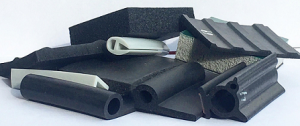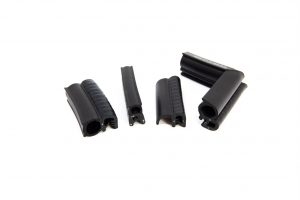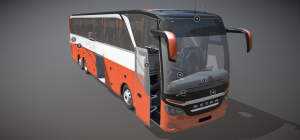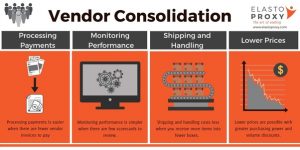 What’s the best way to cut industrial rubber products like seals, gaskets, and insulation? Manual cutting, die cutting, water jet cutting, and abrasive water jet cutting each offer advantages. They also meet different business and technical requirements. As this article from Elasto Proxy explains, choosing the right cutting method for your application requires a complete and careful analysis.
What’s the best way to cut industrial rubber products like seals, gaskets, and insulation? Manual cutting, die cutting, water jet cutting, and abrasive water jet cutting each offer advantages. They also meet different business and technical requirements. As this article from Elasto Proxy explains, choosing the right cutting method for your application requires a complete and careful analysis.
Manual Cutting
Manual cutting is the simplest way to cut industrial rubber products. Often, a box cutter or bladed knife is used. An employee removes material from inventory, positions the sheet or profile on a work surface such as table, and then creates a stencil or template for use during cutting. With edge trim that contains metal wire, guillotine cutting is used instead.
Manual cutting might seem cost-effective, but manufacturers often underestimate the true cost of rework and material waste – topics we’ll examine in a future article. Manual cutting also increases the risk of employee injury. Plus, low-quality cuts can cause potential buyers to question the quality of a larger product design. There are alternatives to manual cutting, but how do these methods compare?
Die Cutting
Die cutting uses metal tools called dies with either flatbed or rotary equipment. Dies vary in terms of cost and precision. Flatbed die cutting machines are slower than rotary die cutters but can process thicker materials. Rotary die cutting is faster and more accurate, but rotary dies are more expensive. With die cutting, engineers must always balance tooling against other project requirements.
No matter which type of die is used, die cutting (like guillotine cutting) puts pressure on the profile and can cause beveling and edge distortions – especially with softer elastomers. If a metal die yields unsatisfactory results, the tool must be scrapped and revised. This adds costs and extends project timelines, especially with complex dies that take longer to machine.
Yet die cutting isn’t always cost-prohibitive. As the cost of a die is spread across more parts, the die’s per-unit cost falls. That’s why the automotive industry uses die cutting to produce hundreds of thousands of simple parts with the same shape. For prototyping and low-to-medium volume production, especially when tighter tolerances are required, water jet cutting offers an attractive alternative.
Water Jet Cutting
![]() Unlike die cutting, water jet cutting doesn’t require tooling. This eliminates costs, supports revisions, speeds prototyping, and reduces lead times on production quantities. Because water jet cutting doesn’t deform rubber materials, cut edges aren’t rough or beveled. Smoother joints look better and are easier-to-bond. Water jet cutting can also create notches, angles, holes, dovetail cuts, and other part features.
Unlike die cutting, water jet cutting doesn’t require tooling. This eliminates costs, supports revisions, speeds prototyping, and reduces lead times on production quantities. Because water jet cutting doesn’t deform rubber materials, cut edges aren’t rough or beveled. Smoother joints look better and are easier-to-bond. Water jet cutting can also create notches, angles, holes, dovetail cuts, and other part features.
Water jet cutting is performed with either a specialized table or an industrial robot. At Elasto Proxy, a water jet table with a 5’ x 10’ cutting surface is used to create parts with 90-degree angles and tight tolerances. High-pressure heads move along an X-Y axis and stream 50,000-psi. The water provides the cutting action and the heads move back-and-forth (X-axis) and left-and-right (Y-axis) in a linear motion.
Elasto Proxy also uses a six-axis robot for water jet cutting. Six-axis operations support the creation of 45-degree angles and other complex shapes. Like Elasto Proxy’s water jet cutting table, the six-axis robot uses computer-aided manufacturing (CAM). The engineer’s computer-aided design file (CAD) supports the creation of a cutting path that’s fine, fast, and highly-accurate.
Abrasive Water Jet Cutting
Elasto Proxy’s industrial robot can also perform abrasive water jet cutting for harder, thicker materials such as ceramic, glass, ballistic fiberglass, steel plates, and rubber-coated metal. By adding abrasive sand to a highly-pressurized stream of water, abrasive water jet cutting combines the benefits of traditional water jet cutting with incredible new features.
When you see our new video, the sights and sounds will amaze you. To learn more, contact us now.










